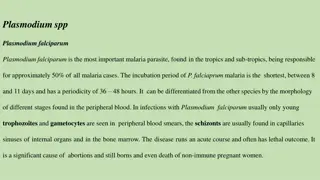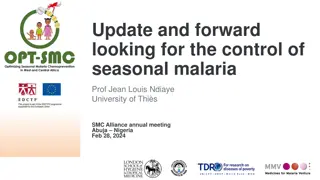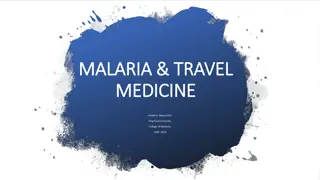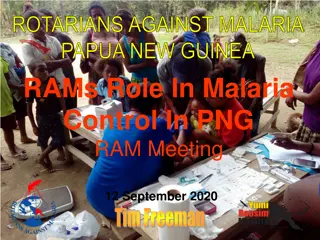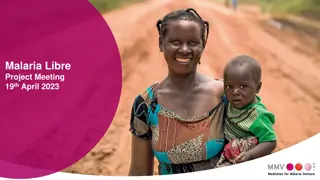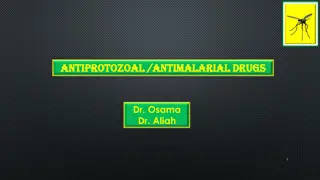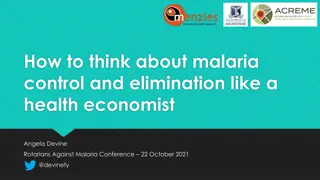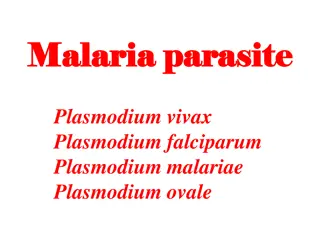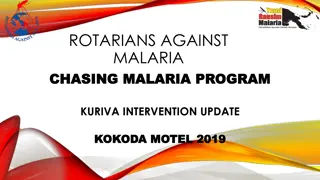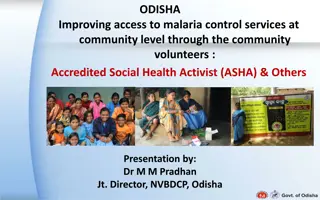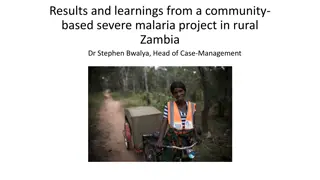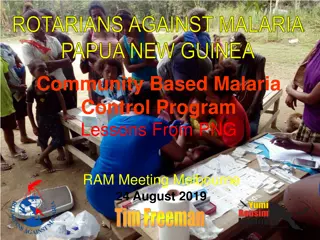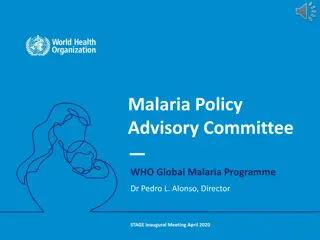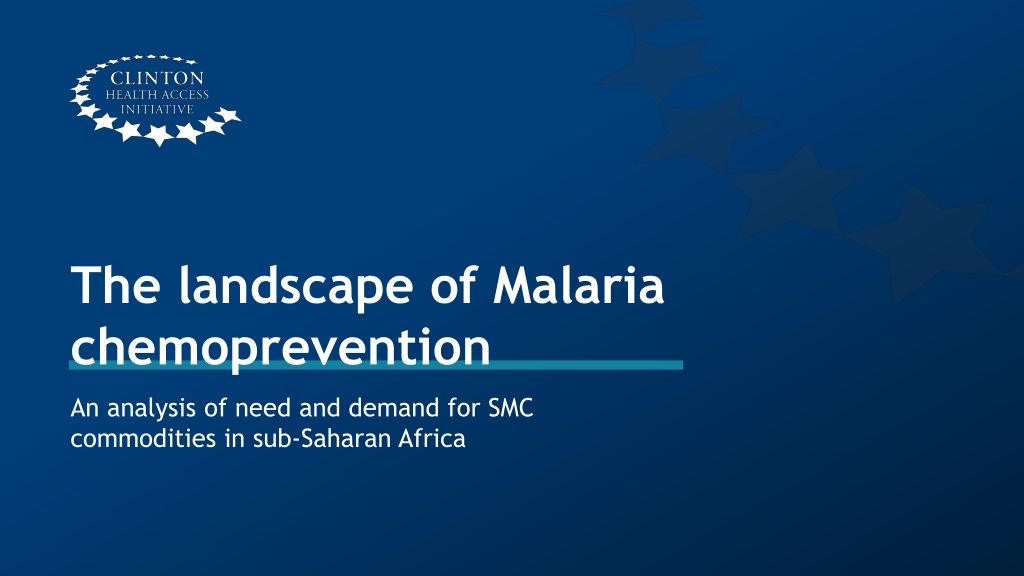
Understanding the Landscape of Malaria Chemoprevention in Sub-Saharan Africa
This in-depth analysis explores the demand and need for SMC commodities in sub-Saharan Africa, focusing on the updated WHO recommendations for chemoprevention. It discusses the market trends, geographical restrictions, and potential expansion, highlighting the importance of efficient planning and allocation of resources to combat malaria effectively.
Uploaded on | 0 Views
Download Presentation

Please find below an Image/Link to download the presentation.
The content on the website is provided AS IS for your information and personal use only. It may not be sold, licensed, or shared on other websites without obtaining consent from the author. Download presentation by click this link. If you encounter any issues during the download, it is possible that the publisher has removed the file from their server.
E N D
Presentation Transcript
The landscape of Malaria chemoprevention An analysis of need and demand for SMC commodities in sub-Saharan Africa
Background This deep dive is part of the forecasting project whose objective available data on investments and strategic national planning for the use and expansion commodities to produce a consensus view of malaria commodity support identification of potential supply risks and efficient planning/resource allocation. Why chemoprevention: is to combine financial Updates to the WHO recommendations for IPTp, MDA, PMC & SMC ongoing Introduction of other preventive methods e.g malaria vaccine(s) which may affect the landscape. of malaria market trends and The deep dive discusses both PMC & SMC but focus will be on the SMC findings. Deep dive objectives: To outline broader context on marketplace for specified commodities Exploration of demand side and supply side considerations and demand for specified product may evolve scenarios for how 2
Updates to the WHO recommendations for SMC Previous recommendation (2012) New recommendation (June 2022) Geographical restrictions to Sahel subregion Removal of restrictions based on geography and SP resistance. Maximum doses stipulated: 4 monthly doses of SMC during the malaria transmission season. Removed of specifications around monthly cycles Age: Limited to children under 5 years of age. Age: SMC use is not limited to children under 5 years of age; use shall be guided by the local area s risk of severe disease. 3
Methods Areas with rainfall seasonality 60% per the Markham s Seasonality Index + Pf Prevalence 5% Regions identified as eligible for SMC based on updated WHO recommendations Population estimates from SMC Alliance and IHME to project the number of children aged 3- 59 months and 5-9 years in these regions Number of SPAQ treatments SMC need: SPAQ treatments to all regions that are eligible SMC demand: SPAQ treatments to all regions that are have implemented SMC in the past, or have ongoing pilots 4
Potential for expansion of SMC under new WHO recommendations SMC eligible areas under expanded WHO criteria SMC implementing areas (2022) 5
The ages 3-59 months population covered with SMC could increase by up to 1.5 times per year if all regions that are eligible for SMC implement it. TAKEAWAYS SMC demand is driven by population growth in admin-2 areas already implementing SMC and gradual expansion into other eligible areas with highly seasonal transmission. Population targeted and population eligible for SMC in SSA 100 90 3-59 months population (millions) 80 70 malaria 60 50 89 87 85 84 82 40 81 79 78 76 75 30 57 56 55 54 53 52 51 50 49 48 20 10 0 2022 2023 2024 2025 2026 2027 2028 2029 2030 2031 Year Targeted population Eligible population 6
Translated to SPAQ treatments, expansion to all eligible areas would double the number of treatments procured between 2021 and 2031. Need and demand for SPAQ for ages 3 months to <5 years 2022- 2031 400 350 SPAQ treatments (millions) 300 250 200 358 351 345 339 333 326 320 314 150 308 302 296 233 229 224 220 216 212 100 207 203 200 196 179 50 0 2021 2022 2023 2024 2025 2026 2027 2028 2029 2030 2031 3 months-5 years demand 3 months-5 years need 7
Considerations for future uptake of SMC For sustainable expansion of SMC, there needs to be; 1. Evidence of effectiveness of SPAQ in new areas 2. Affordable and safe treatment options, with sufficient supply to meet market demand 3. Effective methods of distribution in age cohorts over 5 years 4. Sufficient funding In the updated 2022 guidelines, WHO recommends a combination medicine for SMC that is different from the country s first-line malaria treatment. 8
Conclusions Scale up of SMC in recent years has been rapid, from 14 million children treated with SMC in 2016, to 45 million in 2021. Given the sustained interest observed in SMC over recent years, we have projected continued increase in uptake of SMC, driven by expansion to eligible areas and population growth. However, it is possible that there will be a levelling off or reduction in SMC as countries move towards more targeted deployment approaches and/or have to grapple with budget constraints. SPAQ for SMC is an inexpensive interventions for commodity procurement, with program delivery being the primary cost consideration for funding. However, for SMC, use of alternate treatments may be necessary to mitigate resistance. This could have a substantial impact on program costing. Link to the deep dive: here 9
THE END THANK YOU IVCC THE MALARIA ATLAS PROJECT 10





